
Discover more at Wentworth Castle Gardens
Find out when Wentworth Castle Garden is open, how to get here, things to see and do and more.
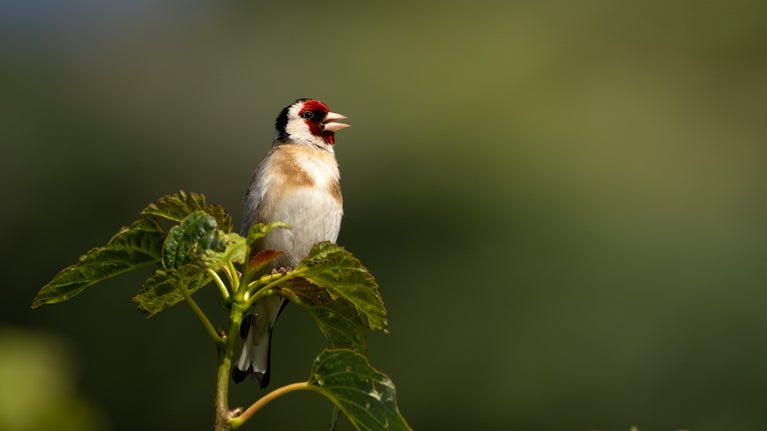
Designed on a grand scale to rival any country-house estate in the country, the 500 acres of parkland at Wentworth Castle Gardens are well worth exploring during your visit.
A historically significant landscape, first transformed by Thomas Wentworth and then re-fashioned by his son, William, the parkland has many stories to tell. Alongside the imposing monuments, picturesque woodlands and two herds of deer, look out for signs of how the landscape is gradually being restored for the benefit of both people and nature.
To explore the parkland, you can follow one of the waymarked routes, join a guided walk, pick up an orienteering trail or just find a bench from which to admire the views and the wildlife.
Please note: the parkland can get quite boggy during the winter and prolonged wet periods. Sturdy walking shoes are recommended. When the weather is dry, it’s possible to borrow the Tramper, our sturdiest mobility vehicle, to access part of the parkland. More information here.
On a walk round the parkland, you’ll see the legacy of both Thomas and William’s work to create a grand estate during the 18th century.
Thomas Wentworth transformed the estate after purchasing it in 1708, adding avenues of mature trees and water features. He continued to buy land to extend the estate right up to boundaries of Wentworth Woodhouse, the estate he had set out to rival.
His son, William, re-fashioned the parkland in the English landscape style. He softened the formal lines of trees to create a more ‘naturalistic’, informal style. The serpentine water feature was also added to create the illusion of a picturesque river when viewed from the house.
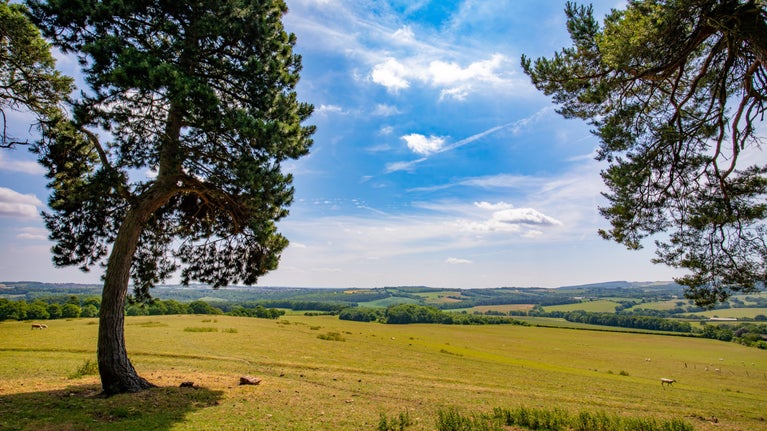
In the 19th century, industrial scale coal mining carved up the estate. This continued into the 20th century, with woodland felled to create opportunities for open cast mining.
The Ranger team are working hard to restore elements of the original landscape. However, some features such as the serpentine, which no longer holds water due to past coal mining activity, will need significant investment over many years.
Why not pick up a seasonal ‘Parkland bingo’ sheet on your next visit to spot the signs of a recovering landscape?
Both Thomas and William built monuments, or follies, around the estate to reflect their wealth and connections. Some of these have been lost, but there are still several still to view in the parkland or glimpse from the gardens.
The easiest to reach, the Rotunda is on the route of the parkland explorer walk. Built by William, it was modelled on the ancient Roman temple of Vesta at Tivoli.
Shielded by trees in Broom Royd Wood, the Argyll monument was dedicated to William’s father-in-law and is the tallest monument on the estate.
In the corner of the parkland, the Queen Anne monument was built by Thomas to honour the late Queen and demonstrates his loyalty to the old Stuart regime.
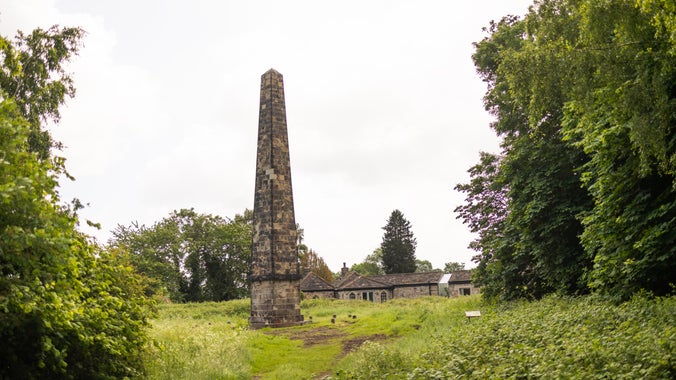
Replanted since coal mining to ‘regreen’ the area, the estate’s woodlands are now havens for wildlife. In the spring, Broom Royd Wood and Ivas Wood are carpeted with bluebells.
Whilst there are trails through the woodlands, they are not officially waymarked, so if you’d prefer to explore these beautiful spaces in the company of someone who knows the way, look out for our regular Ranger walks. More details on our events page.
Historically, there were deer grazing the parkland, and today the parkland is home to two herds of deer.
The red deer are the larger of the two, with the stags developing large, branched antlers. Our red deer are looked after by deer farmer Terry and his team.
The fallow deer are smaller and are known for their distinctive spotted coat. The fallow deer are an ornamental herd and tend to be more wary of people.
On a visit to the parkland, you may see both herds, or neither.
Deer are wild animals so please don’t approach or feed them. Dogs are allowed in the deer park but need to be kept on a short lead at all times.
Sheep and cattle also graze the parkland.
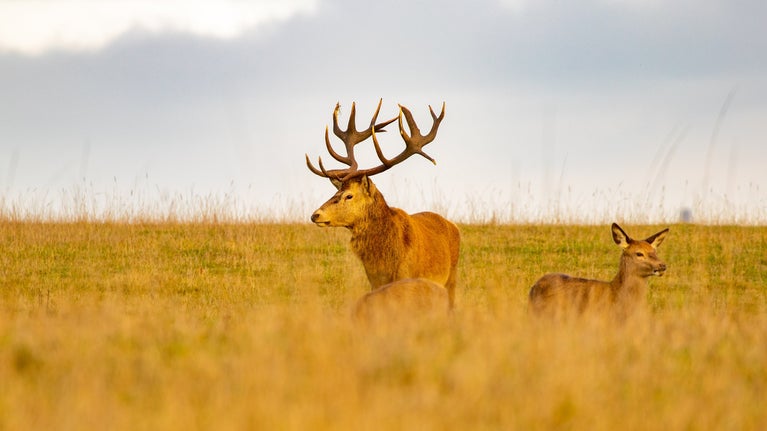
Bats: Around nine species of bat either live, feed or hibernate here at Wentworth Castle Gardens. These include the Common pipistrelle, Brown long-eared and Natterer’s bat. Our combination of old buildings, trees and open parkland make it a great place for bats to thrive.
Birds: Buzzards soar high up in sky throughout the year, with the occasional Red Kite making an appearance. Barn Owls and Kestrels are our top predators, feeding on the small mammals that live in the parkland. Green Woodpeckers can often be seen or heard, feeding on ants and insects. In spring and summer, you might be lucky enough to see migrating Lapwings, Blackcaps, and Goldcrests.
Butterflies: In spring and summer, you will see a range of butterflies in our woodlands and parkland. Some of the early species to see are the Orange-tip and Speckled Wood. Other notable species are the Peacock, Comma, Meadow Brown, Red Admiral and Painted Lady.
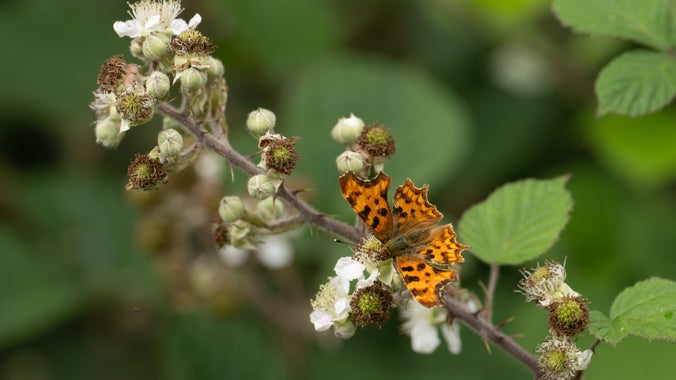
Cattle: From May to September, a small herd of beef cattle graze in the parkland. Cattle help with grassland management due to the way they eat, the types of grasses they feed on, and the seed they spread across the parkland in their dung.
Deadwood: We leave fallen trees and branches in place as they are extremely important for insects and deadwood invertebrates.
Dragonflies & Damselflies: Summer and early autumn is the best time to see dragonflies and damselflies and they prefer being on or near water. Species such as the Common Blue Damselfly, Emperor Dragonfly and the Ruddy Darter have all been seen here at Wentworth Castle Gardens.
Fungi: Autumn is the best time of year to see fungi in the parkland. In the woodland areas, you will often see the distinctive Fly agaric mushroom, with its red cap and a scattering of white spots. Like many types of fungi, these are toxic to humans, so please don’t touch or pick them, though you are welcome to take photos!
Trees: Some of our oldest trees can be found in the parkland, species such as Beech, Oak and Chestnut. These old trees are a vital habitat for bats, birds and insects.

Find out when Wentworth Castle Garden is open, how to get here, things to see and do and more.
There are sixty acres of gardens to explore, created over four centuries. Don’t miss the carefully designed views across the beautiful surrounding parkland.
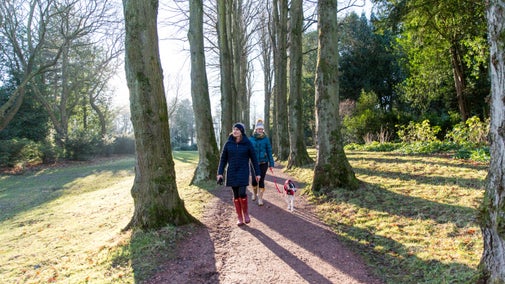
Your support helps us to look after Wentworth Castle Gardens for generations to come. Over the five years that the National Trust have cared for this Grade-1 listed landscape, we have worked to restore the formal gardens, create new habitats in the parkland, and conserve important buildings and monuments.
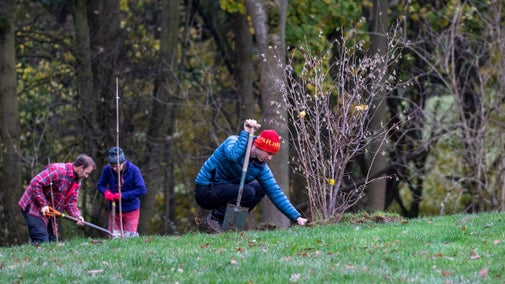
With support from the Government’s Green Recovery Challenge Fund, we're looking for ways to protect our environment and combat climate change. Find out more about the work we're doing.
